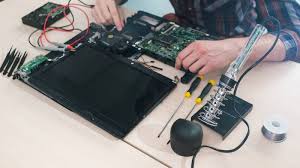A dentist is a medical professional who specializes in the diagnosis, prevention, and treatment of oral health issues. They are responsible for ensuring the overall health of their patients’ teeth, gums, and mouth. Dentists play a crucial role in promoting good oral hygiene practices and providing treatments to help maintain a healthy smile.
From conducting routine check-ups and cleanings to performing complex procedures such as root canals and tooth extractions, dentists are essential for keeping our mouths healthy. Their expertise extends beyond just treating dental problems; they also educate patients on proper oral care techniques and offer personalized advice to address specific issues. Overall, dentists are invaluable members of the healthcare community who help us achieve and maintain a bright, healthy smile.
The Importance of Regular Dental Check-Ups
Regular dental check-ups are crucial in maintaining good oral health. Dentists can detect early signs of issues such as cavities, gum disease, or oral cancer during these routine appointments, allowing for prompt treatment and prevention of further complications. By visiting the dentist regularly, patients can prevent costly and invasive procedures down the line. If you’re due for a check-up, consider scheduling an appointment with Dentist Surprise to ensure your smile stays bright and healthy.
Remember, prevention is always better than cure when it comes to your oral health. By staying on top of your regular dental check-ups and following your dentist’s recommendations for at-home care, you can maintain a healthy smile for years to come. Trust in the expertise of your dentist to provide personalized care and guidance to address your specific needs. Taking care of your teeth and gums now will not only benefit your oral health but your overall well-being as well. So don’t delay, schedule your next dental appointment today and keep smiling bright!





